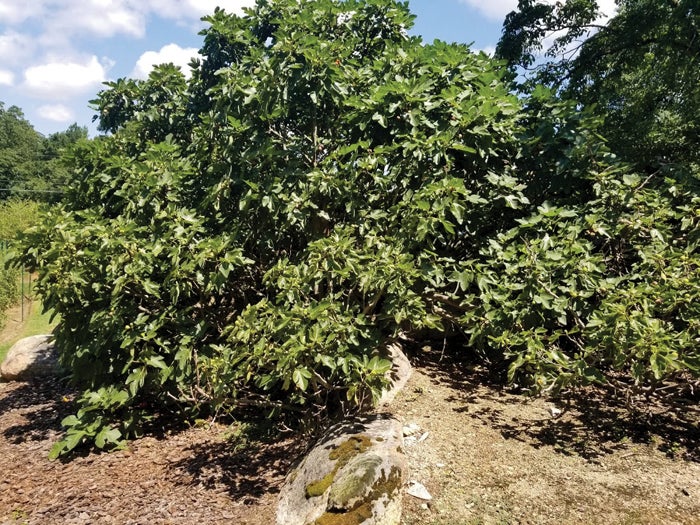Fig trees are gaining popularity in home gardens
Published 12:00 am Sunday, August 9, 2020

- Figs are considered a sub-tropical fruit and are often damaged when temperatures fall below 20 degrees.
Many homes in Rowan County have included fig trees in their plantings to supplement their fresh produce. Most plants are located in a protected area such as a barn or against house or other buildings. Figs are gaining popularity as a small fruit in home gardens and often incorporated into landscapes.
Growing figs in our area can be a challenge because of erratic weather patterns. Figs are actually considered a sub-tropical fruit and are often damaged when temperatures fall below 20 degrees. This fruit tree has done well this season with above-average summer temperatures and ample rainfall. “Celeste” is a hardy fig variety that is violet or light brown fruit containing strawberry pink pulp. The fruit can be enjoyed fresh or used or making fig jams or preserves. Celeste figs ripen in mid-July.
“Brown Turkey” fig cultivar is another popular variety with light coppery brown skin and amber pulp. This popular bush produces a heavy crop of medium-sized fruit in August for fresh use and is also excellent for preserves. Brown Turkey also adapts well as a container plant.
Both varieties should be planted in a fertile, well-drained soil, avoiding poorly drained, tight clay soils. Fig trees/shrubs prefer sandy-loam soils with a pH of 6.0 to 6.5. Fluctuating winter temperatures is a major problem for fig trees in Rowan County. Locate fig trees in an area that is protected from the winter sun and cold winter winds. Unseasonably warm temperatures during the winter months cause premature growth and damage is certain with a sudden plunge in temperature. Planting fig trees on a northern exposure helps maintain dormancy and reduces chance of cold injury. Plant them in full sunlight, avoiding competition from neighboring trees or shrubs.
Fig trees require a complete fertilizer; a good rule-of-thumb for the amount of fertilizer to use is one pound of 10-10-10 annually for each foot of height. Reduce fertilization if the fig tree produces more than two feet of new growth per year. Excessive growth makes the tree more susceptible to winter injury, light fruiting and fruit splitting.
Fig trees require very little pruning but if needed should be done in late winter, just before new growth begins. Make smooth clean cuts, close to the lateral branches and avoid leaving stubs. Prune to control the height of the tree or bush. Remove dead wood or suckers from the trunk or main branches as well as weak or drooping branches. Prune about one foot of new growth each year on most of the branches.
Fresh figs are not tasty until soft and ripe. Pick figs just as they begin to soften. These can be stored in the refrigerator at 40 degrees. Go to https://content.ces.ncsu.edu/fig-culture-in-north-carolina for more detailed information on home fig production.
Darrell Blackwelder is the retired horticulture agent and director with the North Carolina Cooperative Extension Service in Rowan County. Contact him at deblackw@ncsu.edu .




